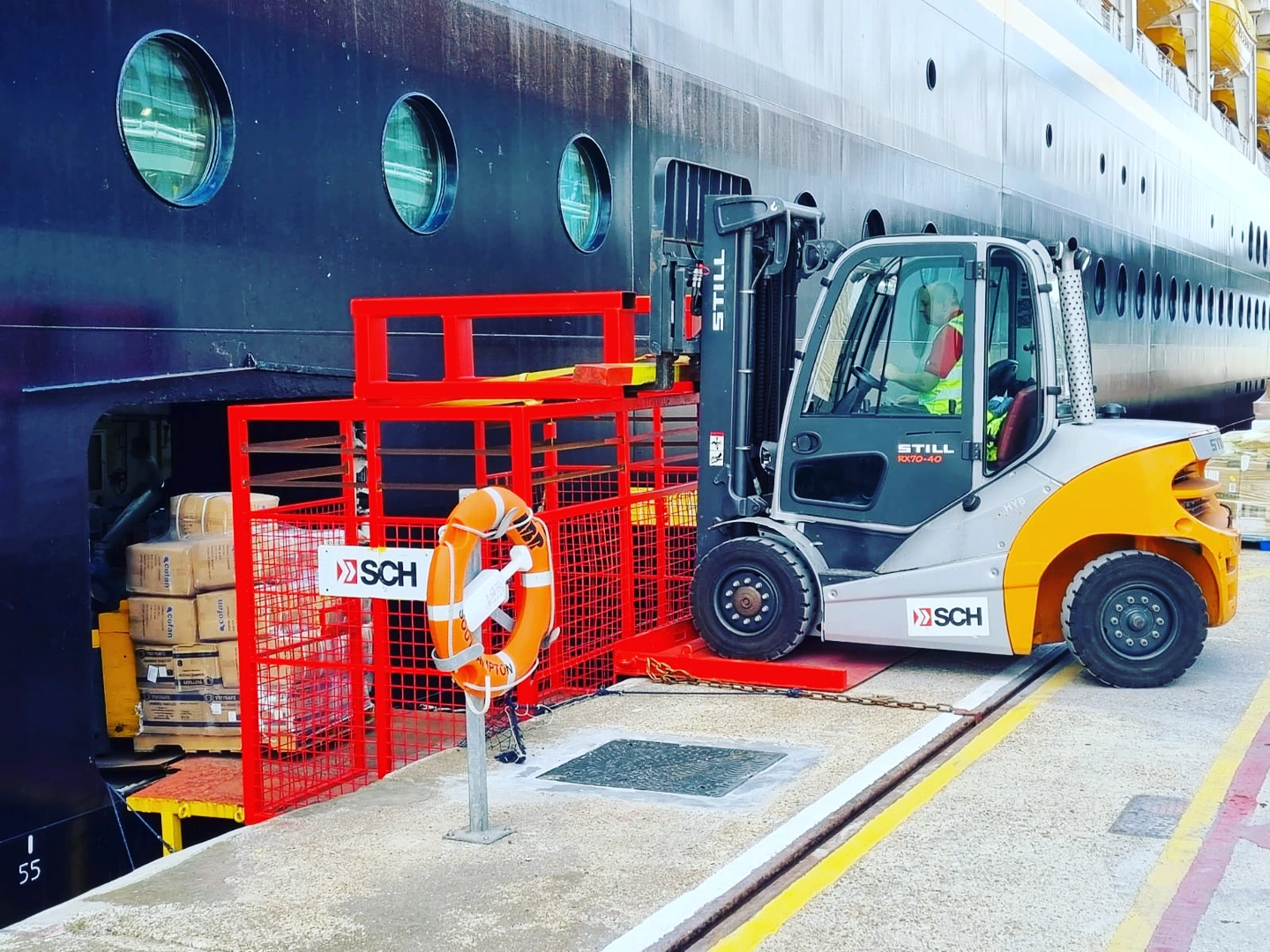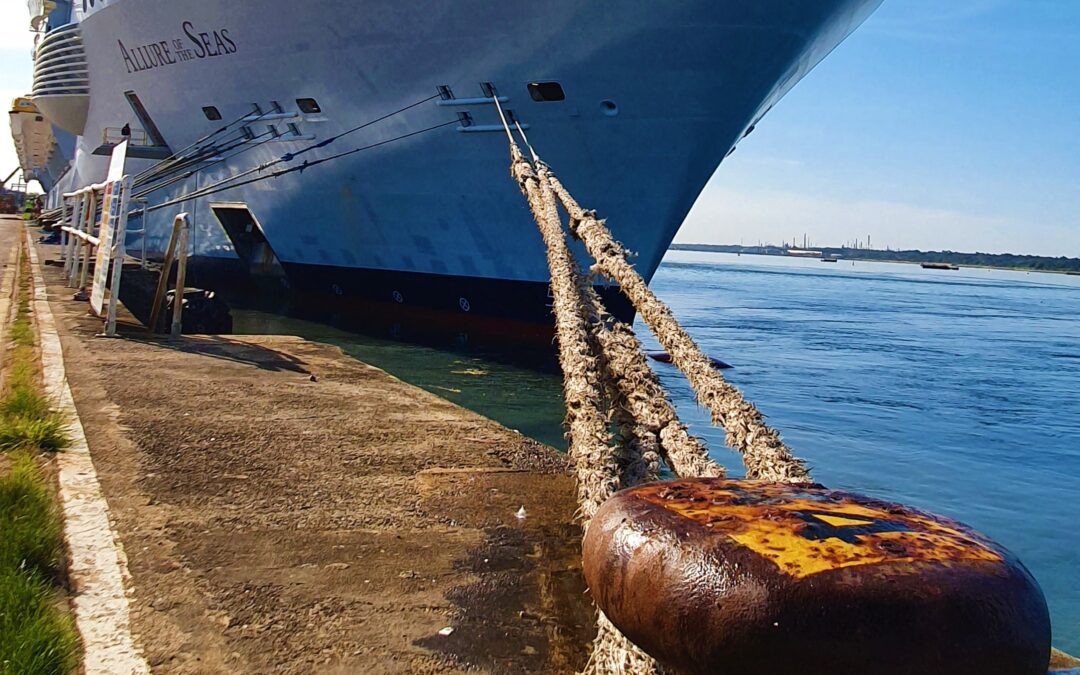Every cruise ship is different and planning a passenger and stores operation for a new vessel involves a careful assessment to ensure that a turnaround operation is completed in the most efficient way.
Planning and assessment starts weeks in advance of a ship’s first call and can involve travelling overseas to observe port operations. For new ships, it can even involve visiting the shipyard during the build process
The task is to carefully assess the crucial access points, configuring the location and measurements of shell doors that will act as the entry and exit points for the platforms used by stevedores to unload or load the ship. The planning will also determine whether the existing handling equipment is suitable and configured correctly.
Most cruise lines have a preferred way of servicing their ships and will often require specific support equipment to facilitate baggage and stores loading.
When you’re unloading and loading thousands of pieces of baggage and transferring hundreds of tonnes in stores from quayside to ship, it’s a busy programme of activity for the single day that most cruise ships spend turning round. No-one can afford a piece of luggage or an important hotel item to be left on the quayside.
The size of the passenger manifest and the schedule of stores loading will dictate the numbers and skills of the manpower that cruise ship stevedores need to assign to the operation.
All the relevant information will be contained in the lay-on sheet that accompanies every ship call, detailing everything from how long the ship will be on berth to the key personnel in charge of each aspect of the turnaround.
Tide levels are also important. High tides will mean shooters or large conveyors that can accommodate trollies can be used to load or unload, while low tides will often mean cages must be used, requiring shell doors to be manned and therefore impacting the overall manning levels.
Often, the speed of disembark sets the pattern for the day. The sooner departing passengers and their luggage are clear of the ship and terminal, the more time the ship and the quayside support staff have to prepare and receive the next cohort of passengers.
Staffing levels are staggered throughout the turnaround and depend on the level of activity, involving baggage, off-loading garbage and transferring stores from road transport to quayside and onto the ship. Finally, having been the first to secure the ship alongside, the mooring team are on station to slip the ship for sailing.
When a cruise ship becomes a regular caller, the turnaround soon becomes a well-oiled operation but each new ship demands a fresh approach to ensure that ports and stevedores meet the demands placed upon them.



